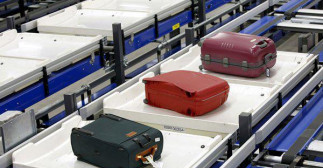How to Avoid Jet Lag

The Inside Scoop on Jet Lag
Desynchronosis, also called jet lag, is a little understood result of crossing three or more time zones in a short period of time - often by plane. It should be noted that this can occur in shift workers, as well, since they are awake, working at night and try to sleep during the day.
Jet lag is characterized by extreme fatigue, irritability, insomnia, indigestion, early awakening (for those who have travelled west to east), headaches, poorer performance, mental lag, brain fog, and less interest in food. Jet lag doesn’t usually last for more than a week, depending on how many time zones one crosses.
What’s the Science?
Desynchronosis is the result of our circadian rhythm (our biological clock, a collection of about twenty-thousand cells located in the hypothalamus) being out of sync with our environment. Naturally, the body produces melatonin, the sleep hormone, when it is dark outside. Our body clock also produces certain hormones based on a loosely 24-hour schedule. When our environment doesn’t match the schedule our bodies have set for us, odd symptoms can occur.
How can we avoid jet lag?
While there haven’t been many conclusive studies, we know that dehydration can worsen desynchronosis symptoms and lengthen the time it takes our bodies to adjust to the new time zone. Be sure to drink plenty of water on your flight, and avoid caffeine and alcohol.
It is often recommended to avoid sleeping on the plane ride, unless your destination’s time is within your normal sleep hours. As a rule of thumb, try to adjust your biological clock as soon as possible - try not to fight it by taking naps or going to bed too early or late.
If you will be crossing numerous time zones (more than 5), you may want to spend a week prior to travel adjusting to your new time zone. A time shift of 6 or more hours, especially in the eastward direction, can be much harder for our bodies to overcome. Adjustment strategies can include melatonin supplements according to the destination’s time, light exposure during the destination’s daylight hours, and avoidance of light exposure during the times where it’s night at your destination. You may also consider moving your eating windows to coincide with the location’s meal times.

 IT
IT


